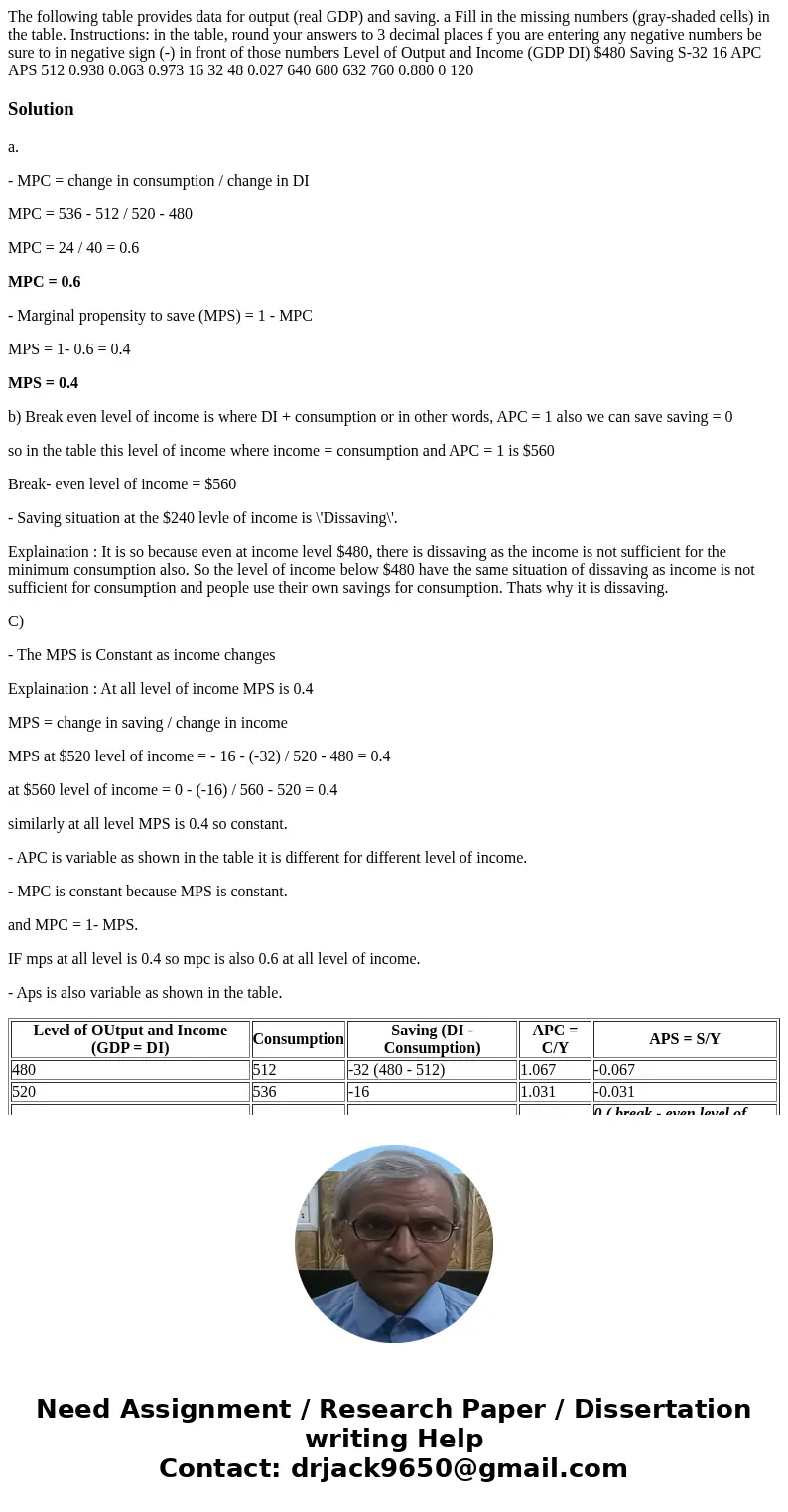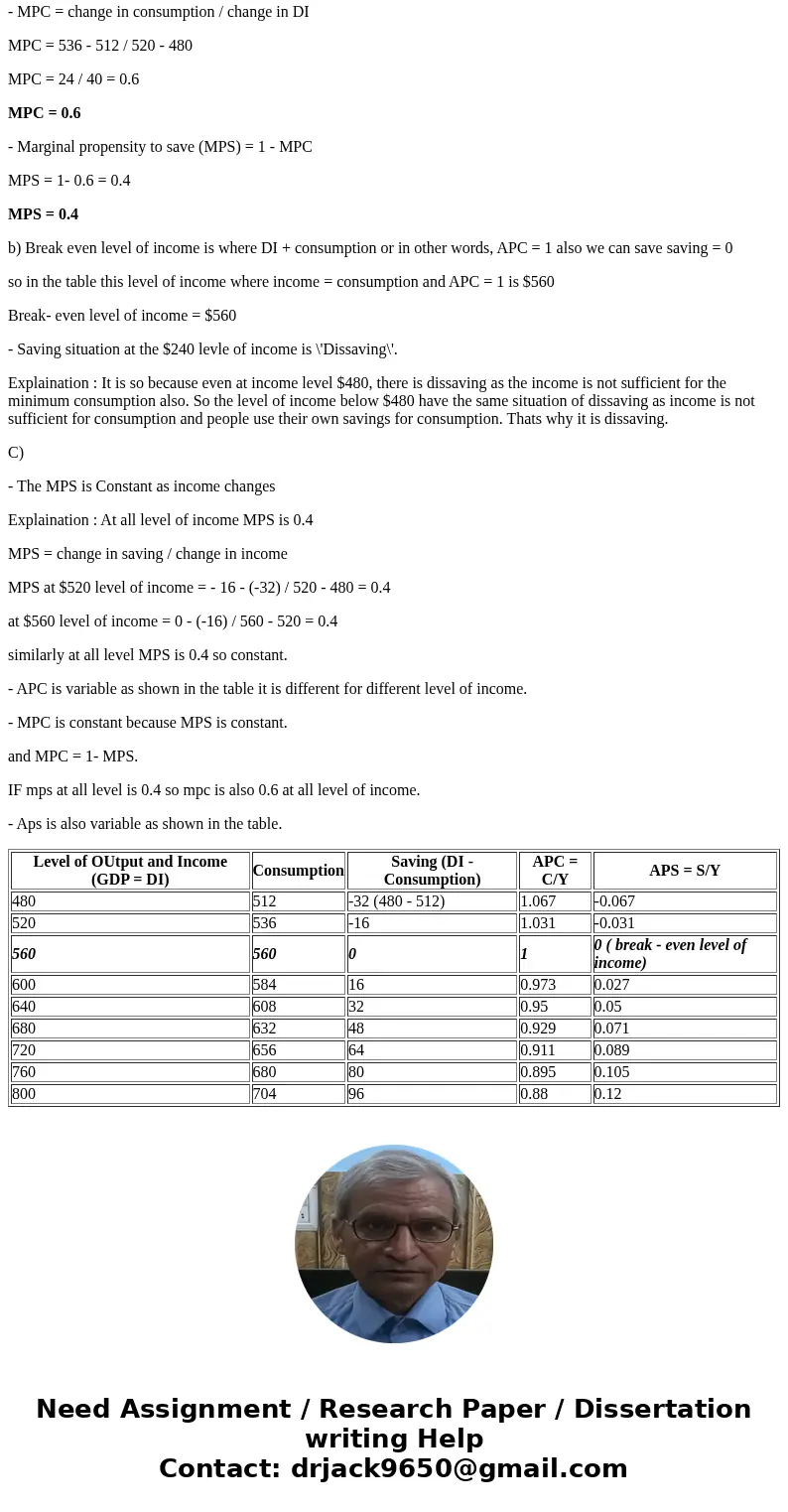The following table provides data for output real GDP and sa
Solution
a.
- MPC = change in consumption / change in DI
MPC = 536 - 512 / 520 - 480
MPC = 24 / 40 = 0.6
MPC = 0.6
- Marginal propensity to save (MPS) = 1 - MPC
MPS = 1- 0.6 = 0.4
MPS = 0.4
b) Break even level of income is where DI + consumption or in other words, APC = 1 also we can save saving = 0
so in the table this level of income where income = consumption and APC = 1 is $560
Break- even level of income = $560
- Saving situation at the $240 levle of income is \'Dissaving\'.
Explaination : It is so because even at income level $480, there is dissaving as the income is not sufficient for the minimum consumption also. So the level of income below $480 have the same situation of dissaving as income is not sufficient for consumption and people use their own savings for consumption. Thats why it is dissaving.
C)
- The MPS is Constant as income changes
Explaination : At all level of income MPS is 0.4
MPS = change in saving / change in income
MPS at $520 level of income = - 16 - (-32) / 520 - 480 = 0.4
at $560 level of income = 0 - (-16) / 560 - 520 = 0.4
similarly at all level MPS is 0.4 so constant.
- APC is variable as shown in the table it is different for different level of income.
- MPC is constant because MPS is constant.
and MPC = 1- MPS.
IF mps at all level is 0.4 so mpc is also 0.6 at all level of income.
- Aps is also variable as shown in the table.
| Level of OUtput and Income (GDP = DI) | Consumption | Saving (DI - Consumption) | APC = C/Y | APS = S/Y |
|---|---|---|---|---|
| 480 | 512 | -32 (480 - 512) | 1.067 | -0.067 |
| 520 | 536 | -16 | 1.031 | -0.031 |
| 560 | 560 | 0 | 1 | 0 ( break - even level of income) |
| 600 | 584 | 16 | 0.973 | 0.027 |
| 640 | 608 | 32 | 0.95 | 0.05 |
| 680 | 632 | 48 | 0.929 | 0.071 |
| 720 | 656 | 64 | 0.911 | 0.089 |
| 760 | 680 | 80 | 0.895 | 0.105 |
| 800 | 704 | 96 | 0.88 | 0.12 |


 Homework Sourse
Homework Sourse